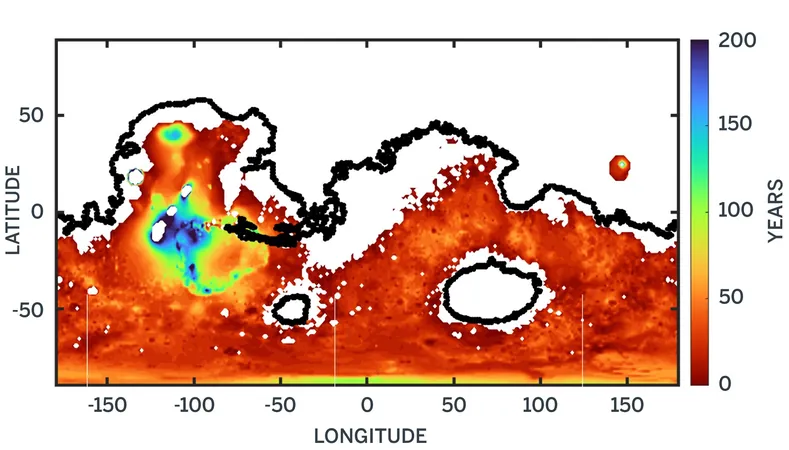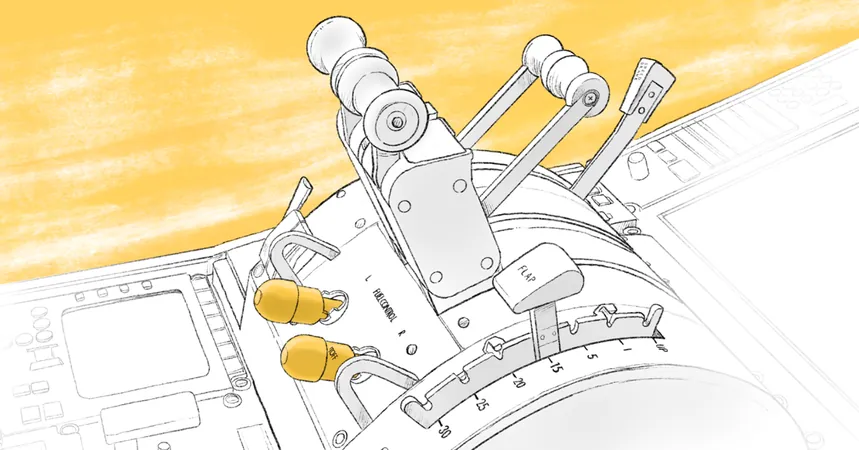
Graduate Students Uncover Key Insights into Mars' Ancient Water Cycle
2025-05-19
Author: Emma
Revealing the Secrets of Martian Water
Scientists have long known that billions of years ago, water once flowed freely across the surface of Mars. Yet, the mysteries surrounding the planet’s ancient water cycle have remained elusive—until now.
A Breakthrough from Texas
Two graduate students from the University of Texas at Austin, Mohammad Afzal Shadab and Eric Hiatt, have made significant strides in understanding this critical aspect of Martian geology. They created a groundbreaking computer model assessing how long it took for surface water to seep down into the aquifer, which lies about a mile beneath the surface.
Unexpected Timescales Revealed
Their research uncovered that this process could have taken between 50 to 200 years—a stark contrast to Earth, where similar processes happen in mere days due to our much shallower water tables. These findings were published in the journal *Geophysical Research Letters*.
An Abundance of Water
The study revealed that the water flow between the surface and aquifer might have been sufficient to submerge Mars under at least 300 feet of water at one time. This significant volume could have contributed to the planet's overall water reserve, vital for understanding Martian history.
Charting the Course of Martian Water
Shadab, who is now a postdoctoral researcher at Princeton University, explained that these insights enhance our understanding of Mars during its earlier, wetter days. "This knowledge is crucial for determining how much water was present to potentially form lakes and oceans, and where that water eventually flowed," he said.
The Fate of Water on Mars
Mars today is a barren landscape, but between 3 to 4 billion years ago, it boasted oceans, rivers, and lakes that shaped its terrain. Unlike Earth, where water continuously cycles back into the atmosphere, the study suggests that much of Mars' water was likely absorbed into the crust and never returned to the surface, posing significant implications for the potential for past life on the planet.
A New Perspective on Mars' Habitability
Co-author Hiatt, who earned his doctorate from UT’s Jackson School of Geosciences, pointed out a stark reality: initial surface water on Mars was likely transient. "If any oceans or large lakes existed, they were probably ephemeral, disappearing into the ground without ever replenishing themselves through evaporation and rainfall as on Earth," he remarked.
Hope for Future Exploration
However, there’s a silver lining for future explorations and the quest for life. The researchers noted that while water may have been absorbed into the Martian crust, it wasn’t lost to space. This crucial detail could be instrumental for future missions searching for subsurface water, essential for establishing human settlements on the red planet.
Understanding the ancient dynamics of Mars' water cycle is more than just piecing together planetary history; it holds the key to unraveling the potential for life beyond Earth.









 Brasil (PT)
Brasil (PT)
 Canada (EN)
Canada (EN)
 Chile (ES)
Chile (ES)
 Česko (CS)
Česko (CS)
 대한민국 (KO)
대한민국 (KO)
 España (ES)
España (ES)
 France (FR)
France (FR)
 Hong Kong (EN)
Hong Kong (EN)
 Italia (IT)
Italia (IT)
 日本 (JA)
日本 (JA)
 Magyarország (HU)
Magyarország (HU)
 Norge (NO)
Norge (NO)
 Polska (PL)
Polska (PL)
 Schweiz (DE)
Schweiz (DE)
 Singapore (EN)
Singapore (EN)
 Sverige (SV)
Sverige (SV)
 Suomi (FI)
Suomi (FI)
 Türkiye (TR)
Türkiye (TR)
 الإمارات العربية المتحدة (AR)
الإمارات العربية المتحدة (AR)